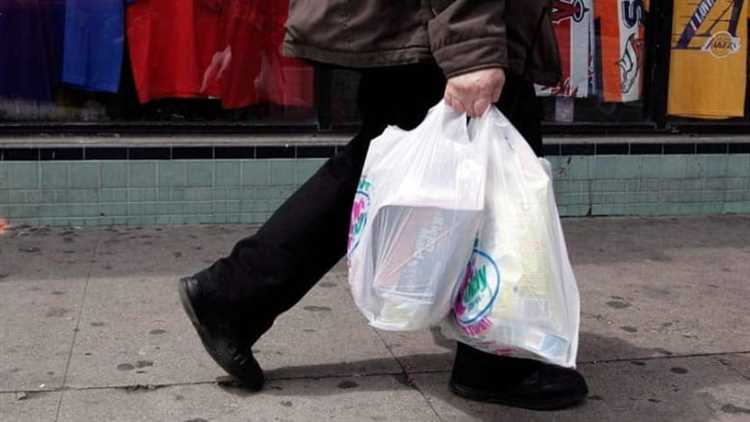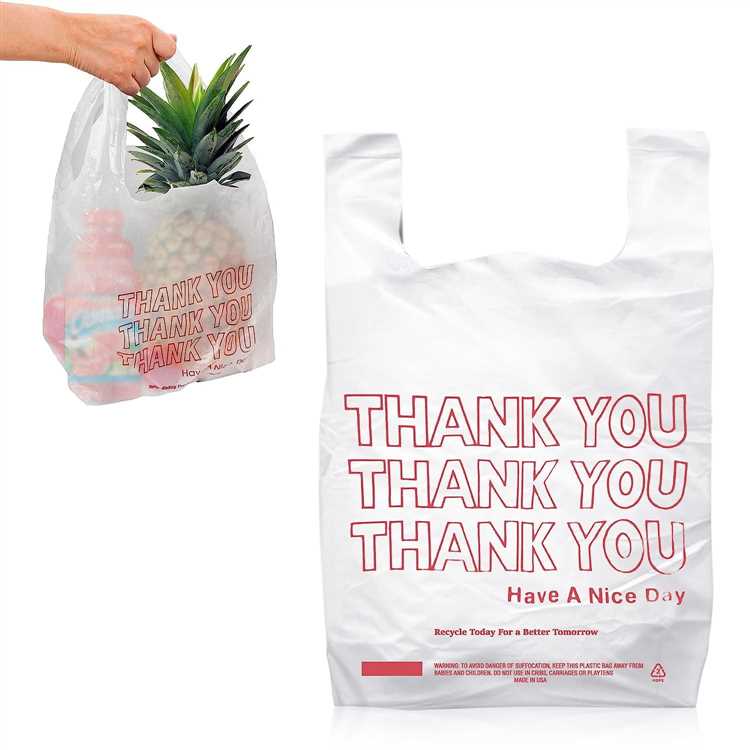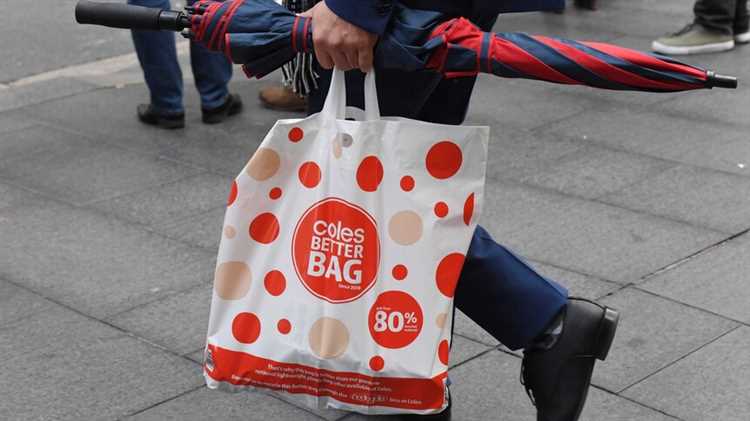
Plastic bags have become a ubiquitous part of modern life. They are convenient, lightweight, and used for a variety of purposes including carrying groceries, storing items, and packing lunches. However, the environmental impact of plastic bags has raised concerns in recent years. Many people are now questioning whether thicker plastic bags are a more sustainable and eco-friendly alternative to their thinner counterparts.
Thicker plastic bags, often referred to as “reusable” bags, are designed to be sturdier and more durable than thin single-use bags. This durability is often seen as a positive feature, as it allows the bags to be used multiple times before they need to be discarded. Additionally, thicker bags can be more resistant to tearing, making them a preferred choice for carrying heavy or sharp objects.
From an environmental standpoint, thicker plastic bags may seem like a better option. Their increased durability and potential for reuse suggests that they would have a smaller overall environmental impact. However, it is important to consider the entire life cycle of a bag when evaluating its environmental friendliness.
- The importance of bag thickness
- Choosing the right bag thickness
- Conclusion
- Durability of thicker plastic bags
- Environmental impact
- Environmental impact of thicker plastic bags
- Alternatives to thicker plastic bags
- Regulations and policies regarding plastic bags
- Q&A
- What are the advantages of thicker plastic bags?
- Are thicker plastic bags more environmentally friendly?
- Can thicker plastic bags be reused more times than thinner ones?
- Do thicker plastic bags cost more than thinner ones?
- Are there any alternatives to using plastic bags?
- Do thicker plastic bags last longer than thinner ones?
The importance of bag thickness

When considering the durability and environmental impact of plastic bags, one crucial factor to take into account is the thickness of the bag material. Thicker plastic bags generally provide greater durability and longevity compared to thinner options.
Thicker bags are typically made of a stronger plastic material that is less prone to tearing or puncturing. This makes them more suitable for carrying heavier items or sharp objects without the risk of the bag breaking. Thicker bags are also less likely to stretch or deform under the weight of their contents, further ensuring their durability.
From an environmental perspective, thicker plastic bags can have both pros and cons. On the positive side, thicker bags are often reusable and have a longer lifespan. This means they can be used multiple times before needing to be discarded, reducing the overall demand for new bags.
Additionally, some thicker bags are made from more environmentally friendly materials, such as biodegradable or recycled plastics. These materials have a reduced impact on the environment compared to traditional plastics, as they break down more easily or are derived from recycled sources.
However, it’s important to note that thicker bags do have a higher environmental footprint during their production phase. The manufacturing process for thicker bags typically requires more resources and energy compared to thinner bags. This can contribute to higher greenhouse gas emissions and resource depletion.
Choosing the right bag thickness
When considering the environmental impact of bag thickness, it is essential to weigh the benefits and drawbacks. Thicker bags may offer greater durability and reusability, but they can come with a greater environmental cost during production. On the other hand, thinner bags require fewer resources to produce but may not be as durable or reusable.
One option to minimize the environmental impact of bag thickness is to choose bags made from biodegradable or recycled materials. These options provide the durability of thicker bags while also reducing the environmental footprint.
Conclusion

The thickness of plastic bags plays a significant role in their durability and environmental impact. Thicker bags offer greater strength and longevity, making them ideal for carrying heavy or sharp objects. However, their production process can have a higher environmental footprint. As consumers, it is important to carefully consider the thickness and material of the bags we use, opting for more sustainable alternatives whenever possible.
Durability of thicker plastic bags
One of the main advantages of using thicker plastic bags is their increased durability. Unlike thinner bags, which are prone to tearing and breaking, thicker bags are designed to withstand more wear and tear.
The extra thickness provides a higher level of strength, allowing the bag to hold heavier items without ripping or bursting. This makes thicker plastic bags suitable for carrying groceries, books, and other heavy objects.
Furthermore, the thicker material also offers better resistance to punctures and abrasions. This means that the bags are less likely to be damaged by sharp objects or rough surfaces, ensuring that they can be reused multiple times before needing to be discarded.
Environmental impact
While thicker plastic bags are more durable, there are concerns about their environmental impact. The increased thickness also means that they require more resources to produce, as they use more plastic material.
Moreover, thicker plastic bags take longer to break down in the environment. If not properly disposed of, they can persist in landfills for hundreds of years, contributing to the global issue of plastic pollution.
Therefore, it is crucial to use thicker plastic bags responsibly, by reusing them whenever possible and disposing of them properly. Additionally, exploring alternative options, such as reusable fabric bags or paper bags, can help reduce the overall environmental impact.
Environmental impact of thicker plastic bags

Thicker plastic bags, often marketed as reusable or heavy-duty bags, may seem like a more durable and environmentally friendly option compared to traditional thin plastic bags. However, their impact on the environment is not as positive as it may initially appear.
While thicker plastic bags are generally designed to be used multiple times, studies have shown that they are often discarded after only a few uses. This contributes to the growing problem of plastic waste in landfills and oceans.
The production of thicker plastic bags also requires more resources and energy compared to thinner bags. These bags are typically made from low-density polyethylene (LDPE), a type of plastic that is derived from fossil fuels. The extraction and processing of fossil fuels contribute to air and water pollution, and the production of LDPE also releases greenhouse gases.
Furthermore, thicker plastic bags take a long time to degrade in the environment. It can take hundreds of years for them to break down, and even then, they do not fully biodegrade. Instead, they break down into smaller pieces called microplastics, which can be ingested by animals and enter the food chain.
While some argue that thicker plastic bags can be reused many times, the reality is that they often end up in landfill sites or as litter. In fact, a study conducted by the UK government found that thicker plastic bags were only used an average of 15 times before being discarded.
In conclusion, while thicker plastic bags may appear to be more durable and environmentally friendly, their overall impact on the environment is negative. They contribute to plastic waste, require more resources to produce, and take a long time to degrade. It is important for individuals to consider alternative options, such as reusable cloth bags, to lessen their environmental footprint.
Alternatives to thicker plastic bags
While thicker plastic bags may provide some benefits in terms of durability, there are several alternative options that are more environmentally friendly and equally durable:
| Alternative | Description |
|---|---|
| Reusable cloth bags | These bags are made from natural or synthetic fibers and can be used multiple times. They are durable, washable, and have a low environmental impact. |
| Paper bags | Paper bags are biodegradable and can be recycled. They are a good alternative to thicker plastic bags, especially for carrying dry goods. However, they may not be as durable or water-resistant. |
| Biodegradable and compostable bags | These bags are made from plant-based materials like cornstarch and are designed to break down naturally in a composting environment. They are an eco-friendly option, but may not be as durable as thicker plastic bags. |
| Reusable mesh bags | These bags are typically made of lightweight mesh fabric and are great for carrying fruits, vegetables, and other small items. They are breathable, washable, and reduce the need for single-use plastic produce bags. |
By choosing these alternatives, individuals and businesses can reduce their reliance on thicker plastic bags and make a positive impact on the environment. It is important to remember to bring reusable bags when shopping and to dispose of any plastic bags responsibly.
Regulations and policies regarding plastic bags
Plastic bags have become a major concern for governments and environmental organizations around the world due to their negative impact on the environment. As a result, many countries and cities have implemented regulations and policies to reduce the use of plastic bags and encourage the use of more sustainable alternatives.
One approach to tackling the plastic bag issue is imposing fees or taxes on their usage. Many jurisdictions have successfully implemented plastic bag taxes or fees, which have proven effective in reducing the consumption of single-use plastic bags. The revenue generated from these fees is often used to fund environmental initiatives or promote the use of reusable bags.
In addition to fees, some governments have outright banned or phased out the use of certain types of plastic bags. For example, numerous countries have implemented bans on thin, single-use plastic bags, as they are often the most environmentally harmful. These bans typically encourage the use of thicker, more durable plastic bags, reusable bags made of fabric or other materials, or alternative packaging solutions.
Furthermore, various governments have launched awareness campaigns and educational programs to inform the public about the environmental impact of plastic bags and promote behavioral changes. These initiatives aim to encourage individuals to adopt more sustainable habits, such as using reusable bags, opting for paper or biodegradable bags, or simply reducing the overall consumption of bags.
Internationally, there have been efforts to address the plastic bag issue. The United Nations Environment Programme (UNEP) launched the Clean Seas campaign, which seeks to eliminate marine plastic pollution by encouraging governments, businesses, and individuals to take action. The campaign focuses on reducing the use of single-use plastics, including plastic bags.
Overall, the regulations and policies regarding plastic bags vary from country to country and even within different regions or cities. However, the common goal behind these efforts is to decrease plastic bag usage, promote sustainable alternatives, and protect the environment for future generations.
Q&A
What are the advantages of thicker plastic bags?
Thicker plastic bags are more durable and less likely to tear or break, making them better for carrying heavy or bulky items.
Are thicker plastic bags more environmentally friendly?
No, thicker plastic bags are not more environmentally friendly. They still contribute to plastic pollution and take hundreds of years to decompose.
Can thicker plastic bags be reused more times than thinner ones?
Yes, thicker plastic bags can often be reused more times than thinner ones due to their increased durability.
Do thicker plastic bags cost more than thinner ones?
Yes, typically thicker plastic bags cost more than thinner ones due to the higher cost of materials and the manufacturing process.
Are there any alternatives to using plastic bags?
Yes, there are many alternatives to using plastic bags, such as reusable cloth bags, paper bags, or biodegradable bags made from materials like cornstarch.
Do thicker plastic bags last longer than thinner ones?
Yes, thicker plastic bags tend to be more durable and have a longer lifespan compared to thinner bags. The increased thickness provides more strength and resistance to tearing or breaking.